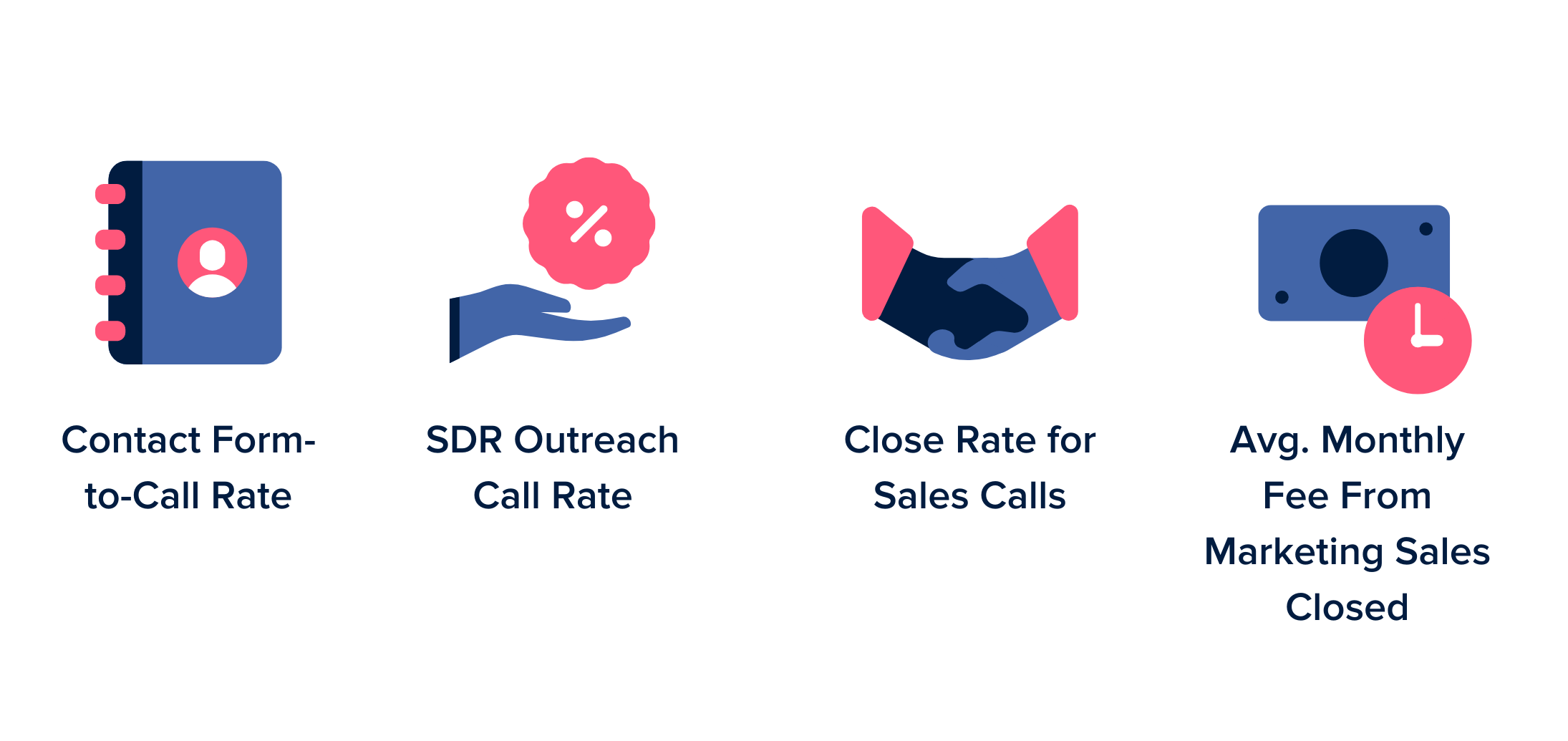From the time our company was founded in 2011, we placed a large focus on outbound sales tactics. We were attending all the big conferences in our industry, speaking at them, sending multiple sales reps for networking, setting up booths — you name it, we were probably doing it in some capacity.
But after about five years, we just weren't seeing the level of results to make this heavy outbound focus worthwhile. It was taking a toll on key members of our team, and while it felt like it was helping our brand awareness, the data wasn't confirming that hypothesis. So we started to slowly decrease the number of events we attended, and we didn't see a drop in new revenue overall as a result. What we did see was that our inbound marketing efforts were leading to more sales calls and consistent, predictable revenue.
We always believed content marketing could be the biggest driver of revenue for companies — we are a content marketing agency, after all. But in 2018, we made a commitment to build our inbound funnel to the point that we no longer needed our conference lead source. When we planned our sales budget for 2020, for the first time, we planned to attend zero conferences. Lucky timing, right?
In 2020, we have gone all-in on inbound and content marketing efforts. We knew we were ready when the total volume of marketing-qualified leads, new sales calls, and qualified contact forms decreased from 2018 to 2019 but we still closed more revenue in 2019. How?
We increased our:

Ready to learn more about how to use content marketing to generate leads for your business? Download  .
.
Marketing Results: 2018 vs. 2019
When measuring our content marketing results, we found that doubling down on our inbound and content marketing efforts led to increases in data points across the board for our team. Here's a look at some of the impact we saw between 2018 and 2019 as we continued to focus more on the inbound side of marketing:
-
Marketing-qualified leads
In 2019, we attracted 4,423 marketing-qualified leads. That number is less than 2018's because we reduced our focus on conferences and maintained fewer regular columns in external publications. But because we took a content-focused approach to marketing and created more blog posts, whitepapers, and case studies, those leads were more qualified, resulting in increases in other metrics.
-
Call rates
Our call rates for 2018 were 45% for contact form submission calls and 2.9% for inbound SDR outreach. In 2019, we improved our processes for setting up calls and achieved a 65% call rate for contact form submissions and a 4% call rate for inbound SDR outreach. While we generated fewer leads in 2019 than in 2018, the leads that we did generate were more interested in getting on the phone and ultimately becoming clients.
-
Close rate and revenue
Not only did we get a higher percentage of people on the phone, but we also improved our close rate from 7.7% in 2018 to 10.84% in 2019. All of these factors led to a 47% increase in marketing-generated revenue.
The big takeaway?
Volume is not as important as quality when it comes to leads generated. A content-centric approach leads to more qualified leads who are more likely to be interested in becoming customers.
If you're looking for actionable advice on seeing a greater return on your content marketing investment, download our free  .
.
A Focus on Content
If you're looking to make inbound a primary business driver for your business, consider implementing some of the primary inbound marketing efforts that have bolstered our business:
1. Inbound SDR
Prior to 2019, various members of our sales team would set up calls with leads who filled out contact forms. When we switched this responsibility to our inbound SDR, we saw a 65% increase in the calls we set up with contact form leads.
2. Lead nurturing
We use HubSpot, which allows us to automatically qualify our leads. Once someone is considered a marketing-qualified lead, our inbound SDR can begin lead nurturing, which we do primarily through email and some social outreach. Her goal is to provide educational materials — such as case studies, blog posts, and guest-contributed articles — to help nurture the lead until they are ready to get on the phone with us.
To learn more about how you can use content to nurture leads and equip your sales team to close new business, download  .
.
3. Webinars
As a content marketing agency, we believe in the power of the written word, but content goes beyond writing alone. For our leads who are looking for education in more of a presentation format, we host monthly webinars. Our webinar strategy includes partner and solo webinars. Partner webinars can be valuable when you and the partner can add value to each other's audiences; solo webinars are great for when you're the sole expert on the topic or when you want to target a specific subset of your audience with highly relevant information.
4. Email newsletter
We send a biweekly newsletter to our subscribers. This newsletter serves as a valuable touchpoint with our leads to hopefully get them to visit and engage with our website. That's why our newsletter highlights interesting trending content that our leads might be interested in reading.
5. Guest-contributed content
We create two or three guest-contributed articles per month. Although we can't control when those might be published, creating them at a steady cadence helps us publish guest-contributed content consistently. These articles allow us to position our internal subject matter experts as thought leaders in our industry. We can also reach members of our target audience, introduce them to what we're all about as a company, and ideally lead them back to our website through links, either within the article itself or in the author's bio.
6. Blog posts
We publish at least one blog post per week, with additional timely blog posts thrown into the mix when something relevant to our industry arises. We optimize our blog posts with keywords and links to our other content, and we include calls to action that help us gauge engagement with our blog content. And much of the content those CTAs lead to are gated resources, which allow us to capture leads.
7. Gated content
Our gated content largely consists of whitepapers, checklists, and templates. These are valuable resources to help our audience members learn more about content marketing and help them do better work as marketers. This gated content also allows us to capture leads. When someone fills out a form to download our gated content, our inbound SDR can then vet those leads and move qualified leads on to our salespeople, enabling the sales team to engage with leads who are likelier to convert into customers.
For help creating effective gated content, check out our free  .
.
8. Repurposing content
You don't have to reinvent the wheel every single time you create new content. That's why we find ways to repurpose our insights into multiple content formats. For example, we might take a high-performing blog post, update and refresh the information, and turn it into a valuable gated checklist that our audience can download. Or we might take a section from a whitepaper, whittle down the copy to the essentials, and then design an infographic as a more visual way to share that information. Repurposing content allows us to reach a broader audience with engaging information through multiple formats.
If outbound is currently your No. 1 lead source, you can pivot to inbound. Sure, it takes time, but now is the perfect opportunity to begin that transition.
Are you ready to dive in to content marketing? Download your free content marketing guide to learn how you can use content marketing to achieve your business goals.












